The GR20 is a renowned trek across Corsica, heralded as one of the toughest hikes in Europe.
Stretching roughly north to south, the GR20 route spans about 180 km with a total ascent of 12,000 m, marked clearly for navigation. Annually, between 10,000 and 20,000 hikers traverse this path, usually completing it in approximately 15 days, depending on their pace and weather conditions. Recognized for its challenging nature, the GR20 comprises northern and southern sections, with Vizzavona, featuring a railway station, serving as a practical midpoint for those tackling either half.
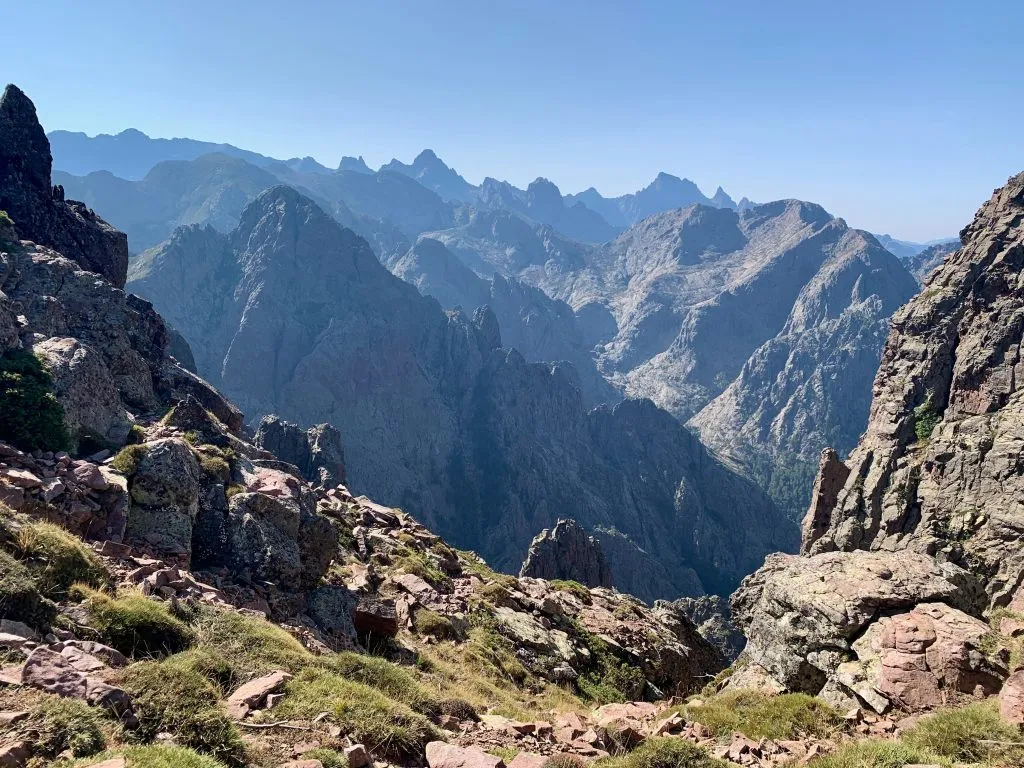
Why hike the GR20?
The GR20 isn’t just a hike — it’s an adventure that tests your limits and rewards you with unparalleled natural beauty. Experience the diverse landscapes of Corsica, from the Alpine north to the rocky south, each offering unique challenges and vistas. It’s a trek that turns hikers into storytellers.
What makes the GR20 so difficult?
Hiking the GR20 is an endeavour that challenges both body and mind, demanding a high level of physical fitness and a resilient spirit. This trail stretches over 180km, incorporating a total ascent of 10,000 metres through rugged landscapes.
The terrain includes steep inclines, rocky paths and requires a fair amount of scrambling. Some technical paths include:
Ridge walks, which require a lot of scrambling and a slow and steady pace.
The Spasimata Slabs, steep rocks slabs that are fitted with cables. They can be extremely slippery and dangerous when wet.
Ascent to Pointe des Eboulis, the highest point of the trek. The ascent is steep, long and requires some technical scrambling to reach the top.
Descent into Vizzavona on steep and stony paths.The extensive elevation loss combined with the unstable terrain can prove to be surprisingly difficult for a downhill hike.
It’s crucial to be in good shape and have prior trekking experience. Mentally, the GR20 demands determination and adaptability, as challenges like weather changes, navigation, and fatigue test your resolve.
Keep in mind that all technical sections come with carrying along a heavy backpack, which will take an additional toll on your body. Prior to starting your hike, make sure to test your balance while carrying a heavy load to avoid injuries on the trail.
Despite the challenging segments, the rewards, however, are immeasurable, with stunning landscapes and a profound sense of achievement.
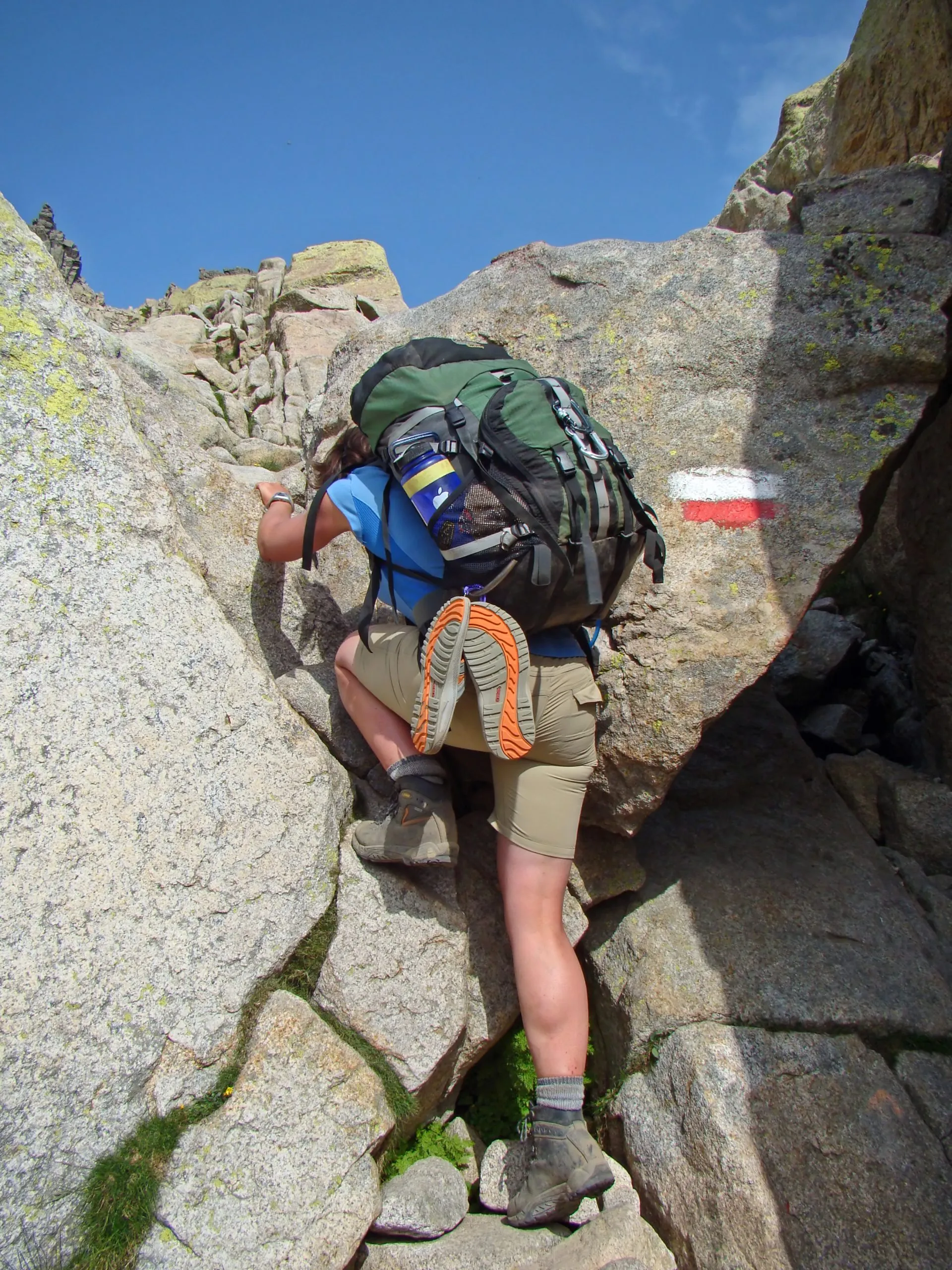
Where does the GR20 route go?
The GR20 stretches from Calenzana in the North to Conca in the South of Corsica. It is possible to complete the hike in either direction. The original trail begins in Calenzana and is therefore the starting point of most hikers. However, for anyone who does not feel up to completing the hike in full, it can be divided into North and South sections as the village of Vizzanova provides the perfect break point.
The North section is considered to be more technically difficult due to its high ridges and plunging rocky descents. The South section is requires slightly less technical knowledge, having fewer exposed and steep segments, but it does however require you to cover slightly larger distances in a single day.
We provide you with detailed maps and routes for all our GR20 tours. For a general overview, you can take a look at the map of the entire GR20 trail.
What is the best time to hike the GR20?
June to September marks the best period to hike the GR20, with June offering mild weather and the least chance of snow in the northern sections. July and August bring heat, making early starts essential, while September offers cooler conditions but a higher risk of storms.
Regardless of the season, the GR20 experiences a wide range of weather conditions, from hot and sunny days to sudden storms and cooler temperatures at higher altitudes. For those with extensive winter hiking experience, the GR20 is accessible throughout the year. However, it needs to be mentioned that the trail’s refuges are unmanned outside of the season, lacking supplies and demanding much more careful planning.
Daily Weather
No matter what time of the year you choose to head on your hike, regular checking of weather conditions and being prepared for anything is necessary to avoid accidents. You can always ask the refuge guardians for tips and opinions of the conditions before you head on your way. As they are mostly local and have vast experience manning the refuges during the season, they will be a reliable source of information.
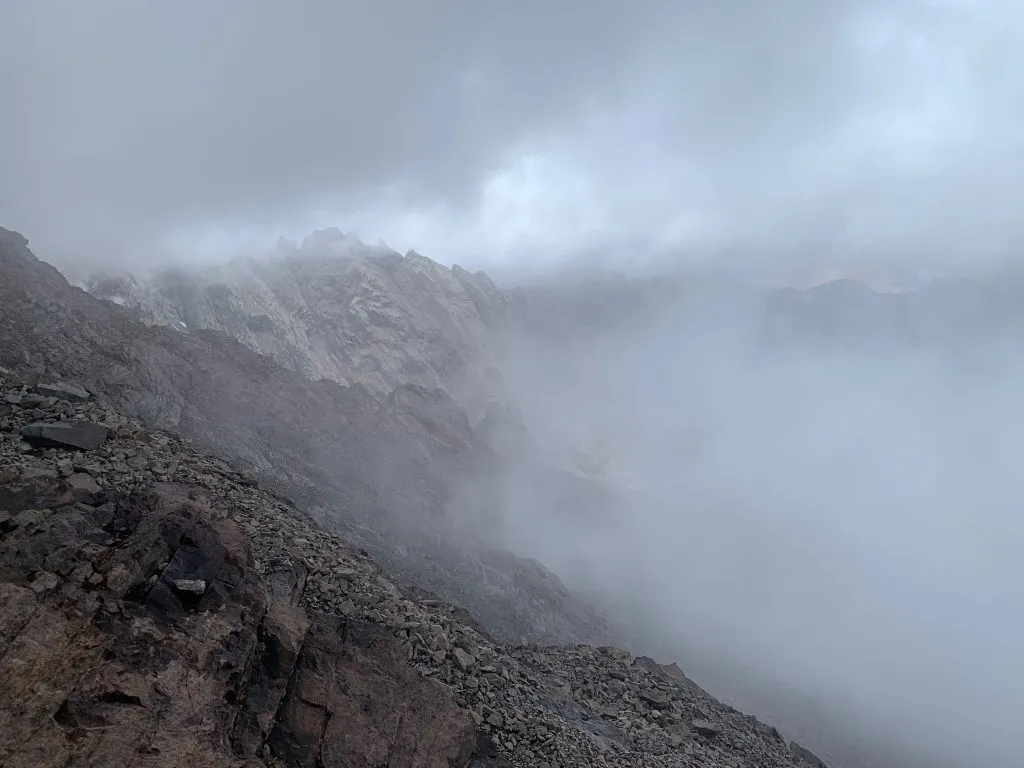
Is the GR20 safe?
The GR20 may be technical but it is not necessarily dangerous for those who are aware of their surroundings and have prior trekking experience.
There is no dangerous wildlife along the way, not even venomous snakes. You might encounter a goat or two, perhaps even some wild horses, but unless provoked, they will cause you no trouble.
The GR20 is relatively well-marked with red and white stripes, but carrying a detailed map and a compass is advised.
To ensure your own safety, prepare for sudden weather changes with appropriate gear and make sure you have sufficient knowledge of emergency procedures.
You should not head out on the trail in the event of a storm. It’s better to postpone a segment of the path for a day or two than to get stuck on the trail in the middle of a storm.
There are no points where you’ll need to use ropes or climbing implements, but there are a few things that make it technical. For additional safety, there are cables and chains fixed to the rock to help you navigate some areas.
It is said that the biggest danger on the trail are reckless hikers. Keep in mind that being aware of your surroundings and respecting the mountain environment can greatly reduce risks.
What are the sleeping options?
Accommodations along the GR20 range from basic park refuges to shepherd’s cabins, private gites, and occasional hotels, offering a mix of dormitory-style and private rooms.
Keep in mind that at most refuges and gites, facilities are basic, reflecting the trail’s remote nature, but they provide essential comforts and a chance to connect with fellow hikers.
Options include communal kitchens, outdoor showers, and, in some places, the luxury of hot water and charging points for electronics.
Booking in advance is advised to secure a spot in these rustic yet charming accommodations.
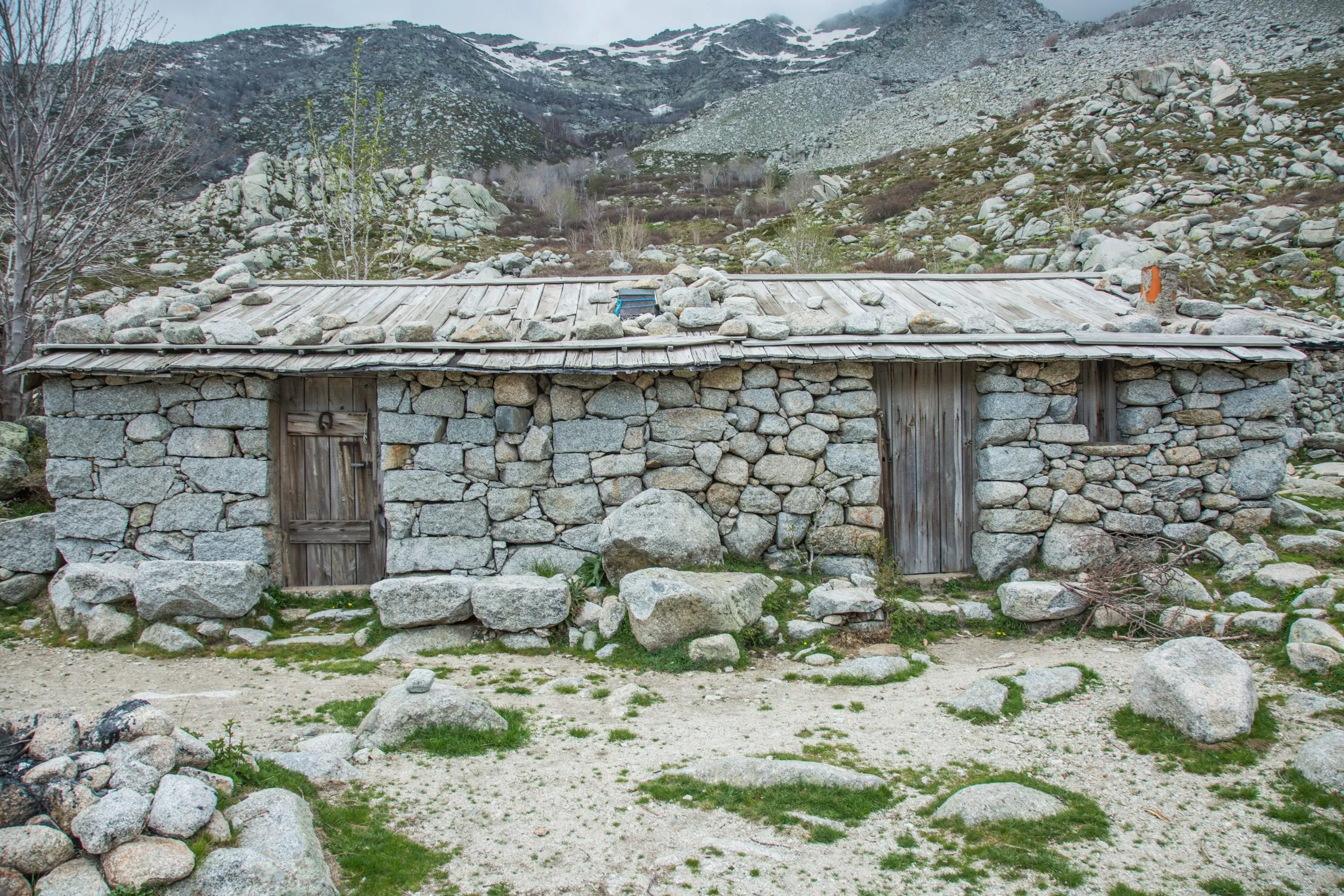
Can I get food and water on the trail?
There is no need for you to pack two weeks worth of food!
From June to September, refuges offer pre-arranged breakfasts and dinners.
Breakfasts are prepared in advance for early departures. Lunch is available from 12h to 14h, with options like omelettes and pasta. Dinner, a three-course meal, usually starts at 19.00, often in two shifts, and requires early reservation.
Some refuges have communal kitchens with basic supplies. In any case, you should bring your own knife.
Keep in mind that although some refuges provide meals during the high season, self-catering hikers need to plan accordingly.
Carrying a day’s worth of water is essential, as well as knowing the locations of refuges for refilling supplies. Always have cash on hand for purchases at the huts.
As far as water is concerned, there are natural freshwater springs outside all of the refuges. You might encounter springs along the trail, but should not depend on that for your hydration needs.You should never drink directly from the rivers. It is highly recommended that you carry with you a packet of water purifying tablets just in case.
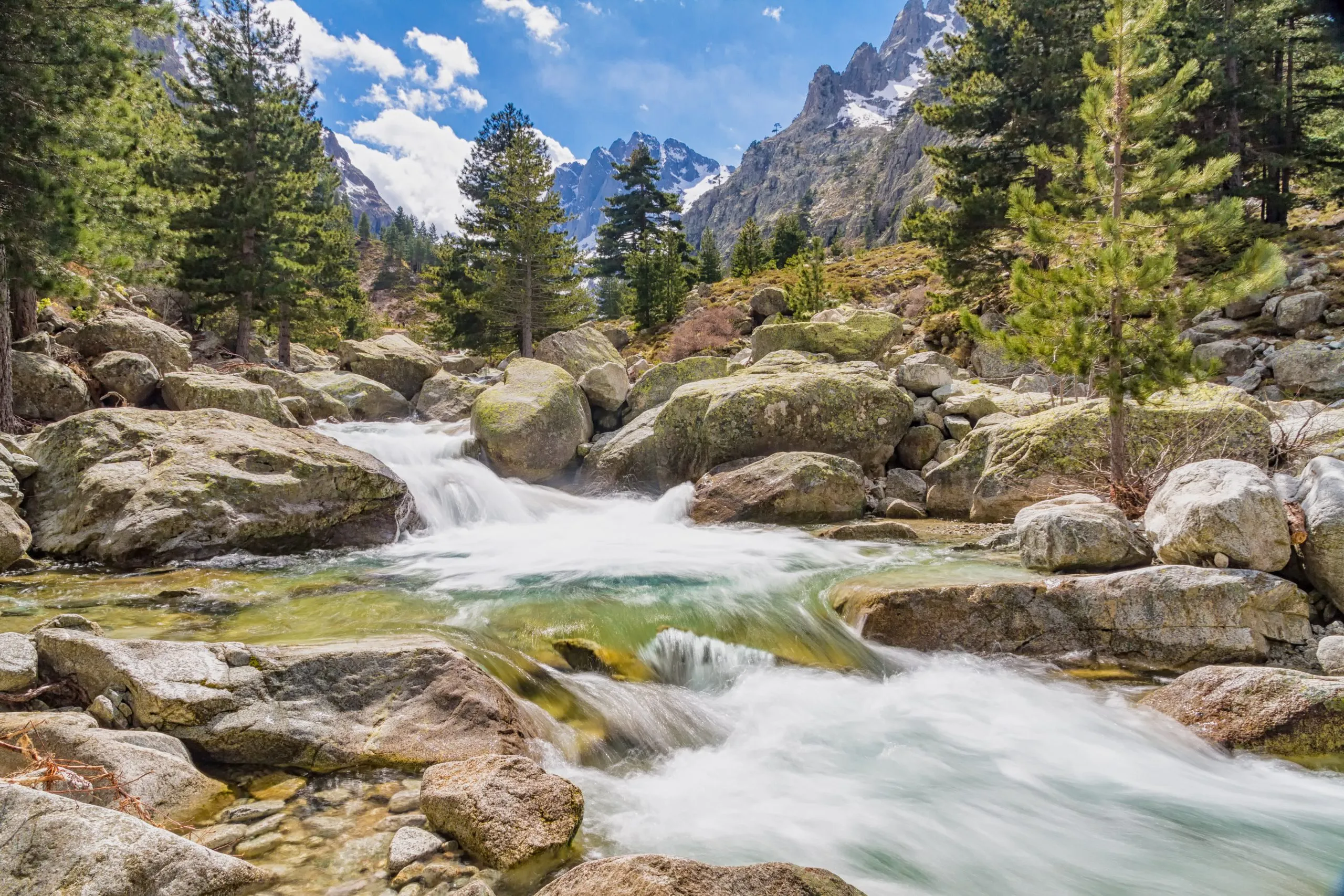
How to prepare for the GR20?
The GR20 is not a walk to be underestimated. With its long distances, high elevation and tricky terrain, it can easily get the best of an inexperienced hiker.
That is precisely why you should create a mental checklist of your regular physical activity before heading on the GR20 trail. Here’s a general overview of how to prepare for the GR20 hike:
- Boost Your Cardio
Engage in aerobic training at least three times a week. Activities you take part in should elevate your heart rate for at least 30 minutes, enhancing stamina for the trail’s demands.
- Test Your Mountain Skills
Tackle hikes that involve some climbing and scrambling to gain relevant experience. There are plenty of hikes out there that can serve as practice hikes so you are confident in your abilities before taking on the GR20.
- Long Hikes And Elevation Practice
There will be several ascents waiting for you along the GR20. Before hitting the trail, aim to manage ascents of 400-500m per hour. It can take quite a toll on your body so make sure that you can take it.
It is important to note that the GR20 is not only technical but also long. You should be able to comfortably walk at least 7 hours a day in all conditions, including heat, elevation and unpredictable weather conditions.
- Prepare For The Load
Keep in mind that you will be taking on this adventure with a 35-45 litre backpacks. This will not only impact your stamina but your balance as well. Start with lighter weights on your practice hikes, gradually increasing to simulate the full load you’ll bear on the trail.
What to pack?
Preparing for the GR20 also involves meticulous packing.
Essential equipment includes:
- Hiking boots or shoes with excellent soles
- Quality socks
- Shorts and T-shirts for daytime
- Swimwear
- Waterproof jacket (preferably Gortex)
- Warm fleece
- Thermal hat and gloves
- Sun protection: hat, sunscreen, lip balm, sunglasses
- Hydration system (2-litre platypus or camel-bag)
- Tupperware lunch box (optional)
- Fork or spoon and a penknife
- First aid kit including blister care
- Toilet essentials: paper, pocket tissues, ziplock bags
- Headlamp
- Walking poles
- Leggings or thermal tights for cooler evenings
- First aid
Recommended:
- Quick-dry travel towel
- Plastic and zip-lock bags for keeping items dry
- Small washbag with essential toiletries & antibacterial hand wash
- Earplugs for a good night’s sleep
- Sleeping bag
- Energy bars or preferred snacks
- Powerbank
Bags:
- Backpack (35-45 litres) with a heavy-duty liner to keep contents dry
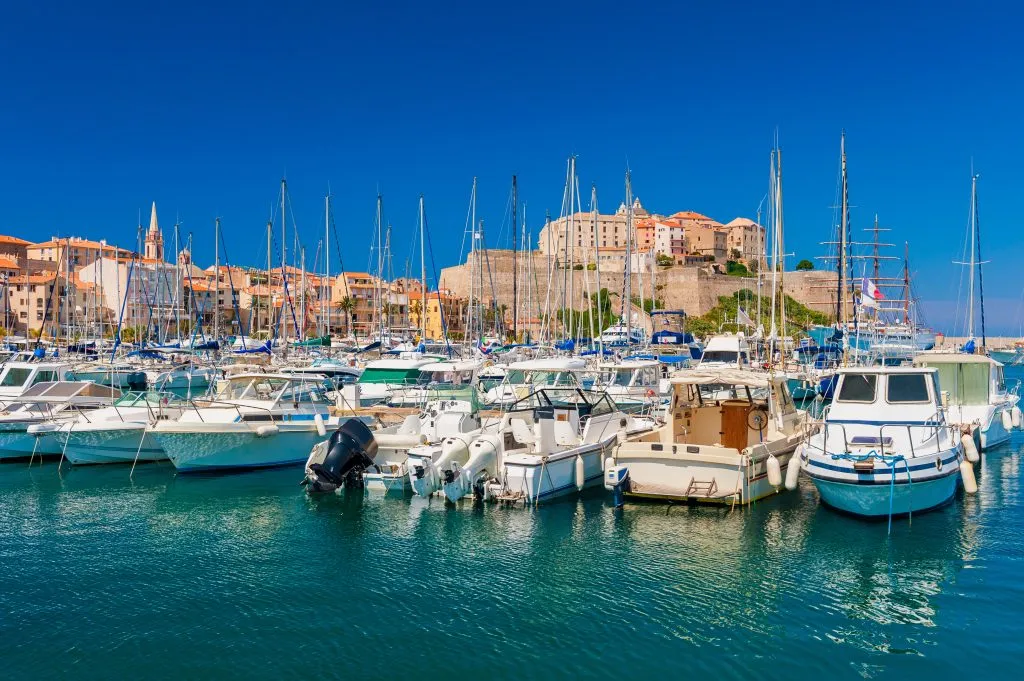
How to Get to The Trail
Reaching Corsica is possible via air with flights to Ajaccio, Bastia, Calvi, and Figari or by sea with ferries from France and Italy. Airports in Calvi and Bastia serve the north, while Ajaccio and Figari are gateways to the south starting points. The island’s train service connects major towns to trail points. Local buses, taxis, or hitchhiking are options for final stretches to trailheads.
Starting Point: Calvi — Calenzana
Bus Service to Calenzana: A bus route connects Calvi station to Calenzana, providing a convenient 30-minute journey to the starting point of the GR20 trek. However, it’s advisable to confirm the shuttle services and schedules with the tourist office prior to setting off on your journey.
Taxi Options: Upon arrival at Calvi’s airport or train station, taxis are readily available to transport you to the GR20. Fares vary among different taxi operators, typically ranging from 20 to 30 euros, often charged as a fixed rate. It’s recommended to conduct some research and possibly make arrangements with a taxi service in advance.
Hitchhiking and On-foot Exploration: For those arriving a day early, exploring Calvi presents a wonderful opportunity. Additionally, you might consider hitchhiking to your destination. Successfully catching a ride could offer a unique chance to experience the scenic route to Calenzana alongside fellow hikers. Should you decide to arrive in Calenzana the day before your trek begins, there are accommodations available to rest before embarking on your adventure.
End Point: Conca — Porto Vecchio
Shuttle service: Shuttle services are available from Conca to Sainte Lucie de Porto Vecchio, where travelers can find accommodation options such as a gîte or a campsite, located 6km from Conca. This shuttle may also provide transportation to Porto Vecchio, depending on seat availability.
Bus Service to Porto Vecchio: bus services operate between Porto Vecchio and Bastia, passing through Sainte Lucie. For information about timetables and departure times, please refer to official sites.
To make your way back to the mainland you can take the bus from Porto Vecchio to the nearby airports or Ajaccio and Figari.
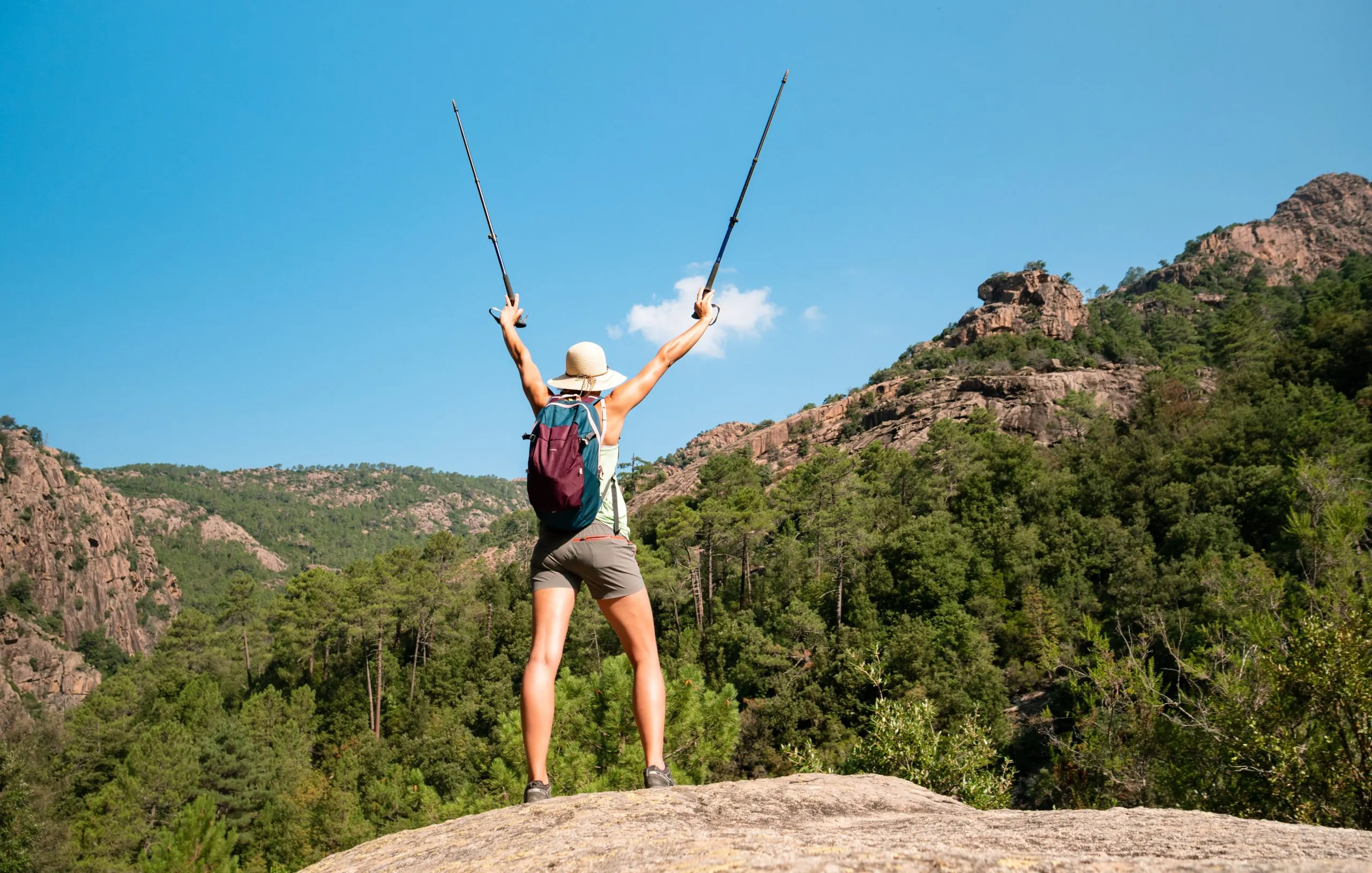
Let’s Go!
The GR20 can make for an unforgettable journey through the wild heart of Corsica. With the right preparation and respect for the natural environment, hikers can conquer this trail, leaving with memories that will last a lifetime.
Whether you’re interested in conquering the full length of GR20, are looking to tackle the particularly challenging North route or enjoy a slightly more peaceful Southern region, we kindly invite you to check out our collection of tours so you can begin planning your journey!













